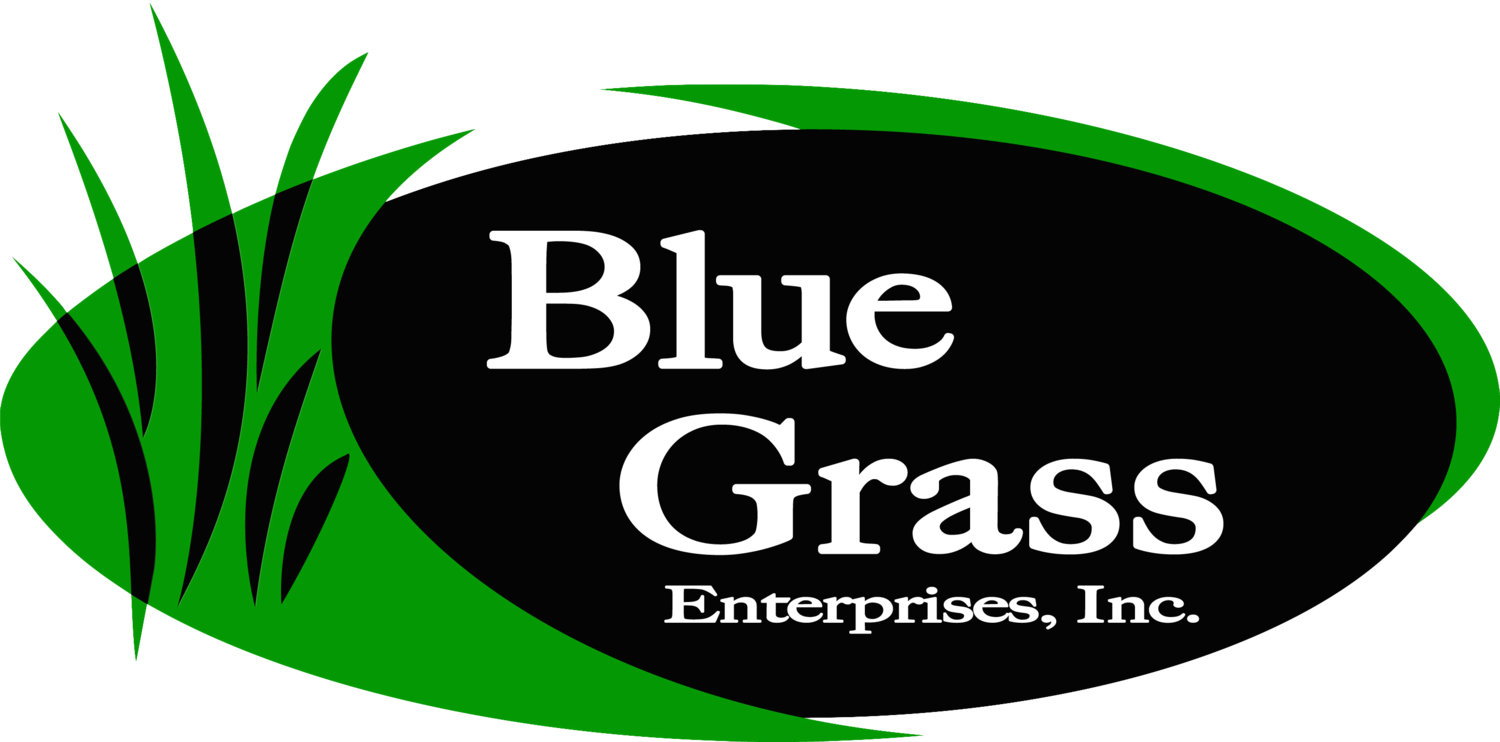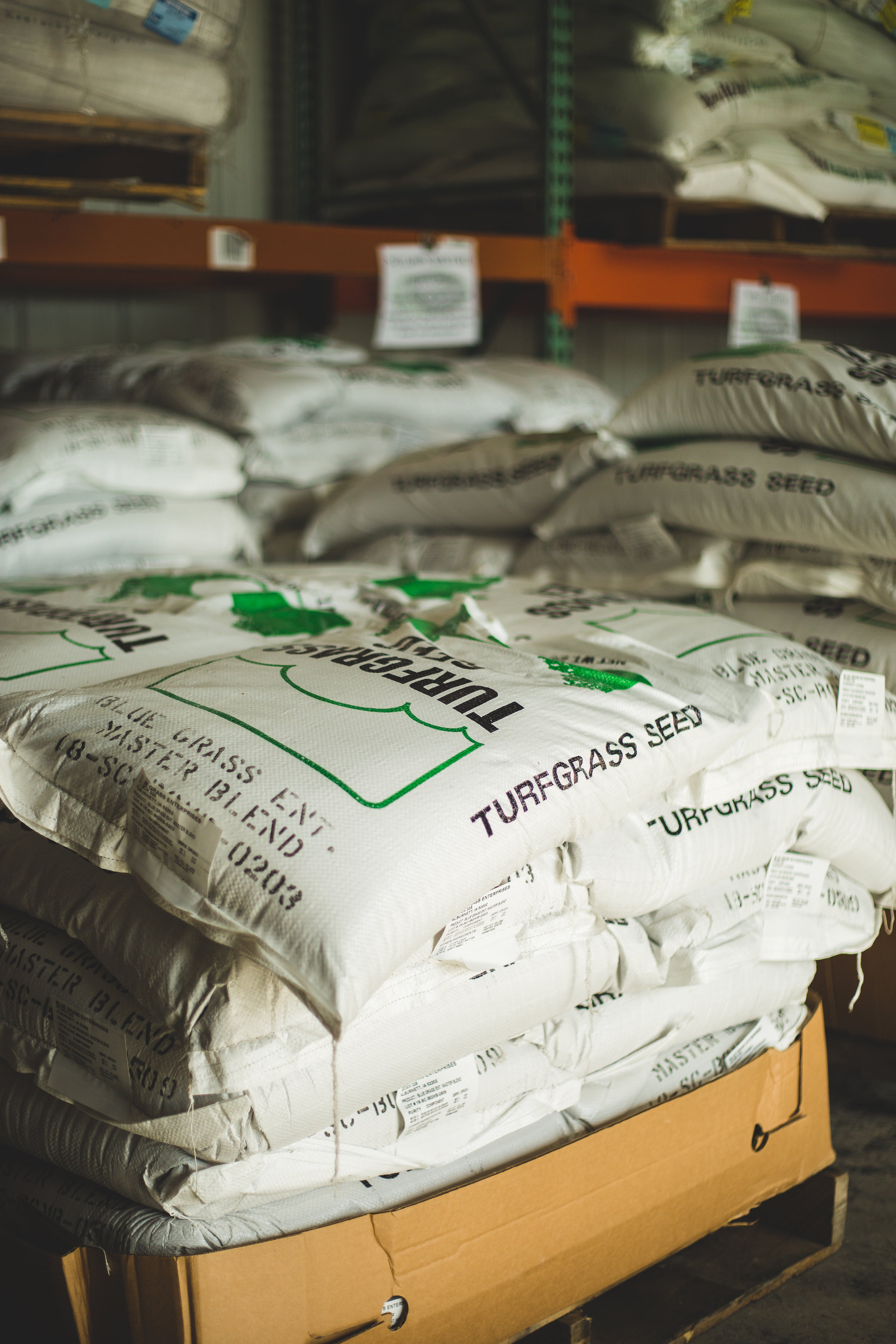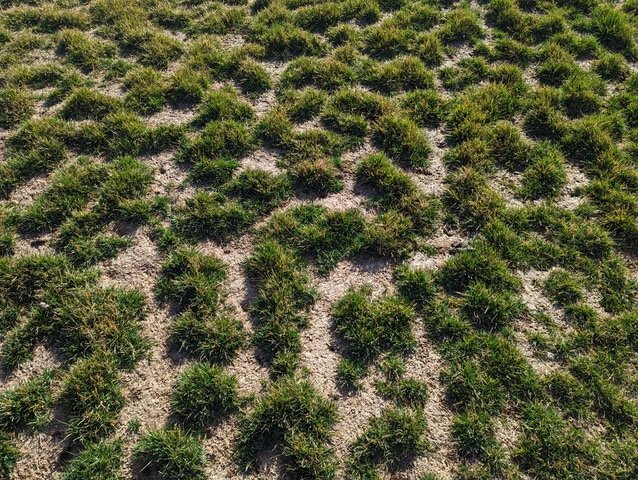The Art & the Science of Seeding GRASS
At first glance, seeding may appear to be more cost-effective than sodding, but in reality, seeding requires both more “inputs” and significantly more dedicated time from the homeowner. Therefore, if your area is fairly small, we would highly encourage you to at least request a quote for sod, because it will save you a headache, go easier on your water bill, and give you instant results.
Our three types of grass seeds are custom blended and are available in 10# or 25# bags.
Note: If you are simply trying to “fill in your existing lawn”, do a soil sample and feed your existing lawn first. Iowa is literally the grasslands of the United States, if grasses are underperforming in an Iowa lawn it is almost always due to lack of nutrients, compacted soils, or insufficient sunlight. Ignoring any of those three issues will result in poorly performing grass, whether it is an existing lawn, sod, or new seed.
It is also important to keep in mind that it can be difficult to match grass types to established lawns and if you don’t want a “patchwork” look in your yard, it is better to work with what you already have! This is a big reason why we do NOT recommend overseeding lawns “to thicken them up”.
That said, sodding isn’t the perfect solution for all budgets for all projects. To ensure the greatest chances of a successful seeding, it is important to have a proper understanding of the work and maintenance involved. If you use top quality products and you aren’t afraid of some elbow grease, (and if Mother Nature plays nicely too) seeding can result in a beautiful lawn.
First, buy high quality seed. If you look closely at the label of cheap seed from most hardware or big box stores, you will notice that specific cultivars are not labeled (meaning that there is no chance you will be able to know if your seed will match your lawn) and a typical germination rate will usually be around 60%.
At Blue Grass, we sell top sod quality seed that has been subjected to rigorous university and impartial third party research. From this research, we select elite cultivars that have been bred for disease and insect resistance, drought, wear and shade tolerance, slow growth rate (for less mowing), and uniformity in color and texture. The three blends of seed we carry here all have germination rates of 90% or higher. This is why we recommend such a light seeding rate, because a little of our seed goes a long way. Additionally, our seed has passed the strictest weed seed regulations in the country. Fewer weed seeds means fewer problems for you in the early stages of your lawn’s life!
How Do I Seed?
Remember, any time you are working with seeds from any plant, you need to think of yourself like a farmer. This means that sometimes your projects will go well (nice rains and lovely temps), and sometimes they won’t (unexpected monsoons, droughts, scorching temps). There is only so much you can control, but, there are things you can do to help make your gamble have some better chances for success!
We have often joked with customers that if seeding were easy, there wouldn’t have been a need for sod farms, but here we are. Just remember that if your seeding project doesn’t go well, we are here and you can sod any time of year - so your project can get done, even if Mother Nature doesn’t play nicely with you!
Here are our recommendations for the best seeding techniques:
1. SEED-TO-SOIL CONTACT
Soil should be worked up as well as you can, at least to a depth of three to four inches. Your goal is to alleviate any compaction in the area and ensure good drainage in the future, which will help you avoid future lawn diseases.
We recommend rototilling to reduce any clodding. If the soil is already prepared, rake to level the area and remove any rocks. Grass seed can be spread with the same equipment used to spread fertilizer, or by hand for small areas. The seed should be divided into two lots. Spread the second lot at right angles to the first. To ensure good seed-to-soil contact, the areas should be lightly raked, raking too hard will redistribute the seed and also plant it too deep. The average depth should be between 1/8 to 1/4 inch. Once this has been completed the area should be lightly rolled to ensure good soil contact.
2. ADEQUATE SOIL MOISTURE
Hopefully, Mother Nature will aid you in keeping the seedbed moist. However, you should be prepared to help. Improper watering is probably the biggest factor that causes new lawns to fail. For seeds to properly germinate, the top layer of the soil must not be allowed to dry out. After planting, saturate the lawn to almost puddling. After this point light and frequent sprinklings will be needed, the surface must not be allowed to dry out until the lawn is well established. If it is extremely warm or windy, more frequent watering will be needed. Once the lawn is long enough to mow, reduce your watering to once or twice a week, as conditions dictate.
3. ADEQUATE SOIL TEMPERATURES
Most cool-season grasses germinate when the SOIL TEMPERATURES reach about 50 degrees. In Iowa, this typically happens in May. Any seeding done prior to soil temperatures of 50 degrees will lay dormant until they reach this point. Generally for fall seeding, seed no later than September 15 to ensure fall germination. For dormant seeding, the dormant seeding will lay idle until soil temperatures are consistent with germinating at the first available time frame that following spring. Read more about dormant seeding techniques here.
4. ADEQUATE SOIL NUTRIENTS
The grass seed itself has enough “food” or nutrients to germinate and send out a root. However, the reason the seed has sent out a root is in search of food, so it is important to maintain an adequate supply of nutrients at all times. Use a STARTER fertilizer when seeding. A starter fertilizer contains phosphorus which is a critical nutrient for root development. Starter fertilizers are typically entirely consumed within about three weeks, so you may need to feed the area multiple times until full establishment has occurred. Once established begin a regularly scheduled fertility program and enjoy the benefits of a healthy lawn.
Frequently Asked Questions
Author’s note: I adapted this section from a FAQ section I stumbled across online earlier this year that contained advice that was really inappropriate for Iowa soils, weather, and grasses.
Tiny sod farmer soap box: Always remember that anyone in the world can put anything on the internet - so look critically at the content you are reading and ask if the solutions being presented really make sense for you and where you live. When you are working with plants, it is important to specify what species, soil types, and weather patterns you commonly are working with. Better yet, find experts you trust in your area and specifically follow their advice. This will be much more helpful to you than randomly Googling an unspecific topic and reading whatever pops up first.
Behold! Here is a good list of questions, modified for Iowa responses! Enjoy!
What Spreader Settings Should I Use?
Spreader settings can vary, depending on what grass seed type and spreader you are using. And frankly, grass seed is so itty-bitty that a tiny imperfection in the spreader can result in a major distribution issue. The best thing to do is to do some testing to see what setting gets you 10 seeds/square inch. This is a generous seeding rate. Resist the urge to add additional seed. When you add additional, unnecessary seed to a project you are simply introducing more competition in an area with limited resources. This will actually stunt the success of your project.
I Planted My Grass Seed and It Didn't Grow. What's Wrong?
Let’s face it, if getting grass seed to grow was easy there wouldn’t be sod farms. There are many things that could have happened. Too much or too little water, weather conditions, washing, use of weed control products, and/or poor soil conditions can all be possible causes.
Also, check the calendar before you panic. Master Blend, for example, can germinate in as few as 14 days or as many as 28 days, depending on weather and soil conditions. Nu Lawn and Dense Shade both will have germination times closer to 14 days.
Don’t panic, you may still be in an ideal planting window if you want to try again… Or, better yet, you can sod any time the ground isn’t frozen. <3
Why is it important to know what kind of grass you have growing in your lawn
How Do I Know What Type of Grass I Have?
It is important to keep in mind that different species of grasses will never start to magically look like each other. You wouldn’t plant an apple tree in the middle of an oak grove and expect them to behave or look the same, the same goes for grass. Tossing down a different species of grass will only result in a “patchwork” look in your yard. In short, if you don’t know exactly what was planted in your lawn, it is better to feed it to fill in, rather than apply more seed!
Hopefully, you or your builder will have a record of where the original sod or seed for your home came from. Knowing this will allow you to contact the farm or distributor directly to ask about cultivars so that you don’t end up with a patchwork lawn.
What Is Overseeding? Do you recommend it?
We do not typically recommend overseeding a Kentucky bluegrass lawn
Overseeding means spreading grass seed over an existing lawn “to thicken the turf”. Don’t do this as an annual practice. Save your money and your time by reading this article that explains why overseeding is not a good idea.
However, there can be situations when overseeding can be helpful for lawns, such as to speed recovery in a year of extreme drought that has done significant damage to the lawn.
This photo is a great example of what “old” drought damage will look like. This area would be best treated with fluffing up the dead bits a bit, aerating, and feeding 13-13-13 every few weeks before rain or irrigation to encourage lateral growth.
As a general rule, if the dead areas in your lawn are smaller than basketball-sized, then feeding your lawn with 13-13-13 every few weeks before rain or irrigation is the best path forward. This technique avoids many of the potential pitfalls overseeding exposes homeowners to (highlighted in the video above).
If the damage is more significant than “basketball-sized” holes you might consider overseeding. The most critical step for overseeding is seed selection. There are hundreds of Kentucky bluegrass varieties and they all have very different genetic potentials for color, height, disease and drought tolerances, etc. If you are not sure what kind of grass you have growing in your lawn, we strongly advise you to avoid overseeding if at all possible.
I Want to Overseed! Now what!?
Before beginning, be sure to fluff up all matted-down plant materials to expose the areas where the seed needs to reach. Then, either core aerate prior to seed application (to provide holes for the seed to reach with a broadcast spreader) or rent an interseeder (also known as “slit seeder”) to cut the grass seed into the exposed areas.
If you cannot get your hands on an interseeder, there is another technique for overseeding using a power rake. (Fair warning here, this method isn’t as elegant or efficient as using an interseeder, but it does work, and it avoids having small clumps of “good grass” that will mostly spring from the holes an aerator leaves behind.) For this method, you will
1. Apply seed
2. Power Rake (aka “dethatch) the lawn. The power rake will help to move some of the seed and fertilizer to the ground for better seed-to-soil contact.
3. Leave the fluffed-up thatch behind as a kind of moisture mulch, but not too much so you don’t risk smothering the grass below. Keep in mind sunlight and air will need to be able to reach the seedlings below. This may mean you need to remove or scatter some clippings in any spots that are too thick or too thin.
4. Apply 13-13-13 starter fertilizer. Please note we are waiting to have you do this application until after the power rake is used to avoid the rake piling up little mounds of 13-13-13.
5. Finally, do a core aeration to alleviate compaction (and provide another opportunity for the seed to take root).
With either method, you should apply 13-13-13 regularly (every few weeks) for the next month or two to help seedlings mature as quickly as possible. Remember that seeding projects require lots of watering. Your goal should be to keep the seedlings wet while avoiding puddles throughout the rest of the growing season.
How Long Can I Store Grass Seed Before It Goes Bad?
If stored in a cool, dry place, grass seed can last for years. As a general rule expect the germination rate to decrease approximately 10% each year. Freezing does not extend its germination rate in any significant way, so save the freezer space for something delicious!
How Much Grass Seed Should I Buy?
First, you need to know the size of the area you want to plant. Then you need to choose which grass seed is right for you and your project (see below). Seeding rates are also listed in the chart below, but if you want us to double-check your math, give us a call and we can help you with the rest! 319-842-2165.
How Do I Know Which Grass Seed to Buy?
Here is information on each of the three seed varieties we have in-house. These blends can only be found at our facility because we have them custom-blended.
Is it possible to put down too much grass seed?
When I Follow The Seeding Rates In That Table, It Doesn’t Look Like Very Much Seed On The Ground. Should I Put More On?
No. More does not always equal better. In fact, we jokingly call this urge the “Moron Approach” because people feel a weird urge to put more on. Adding more seeds increases the amount of competition for limited resources like food and water. Resist the urge to be a moron!
Will The Dense Shade Seed Grow In Full Shade?
No. All grasses need a certain amount of sun to thrive. Dense Shade is our most shade-tolerant seed and can do well in areas that receive as little as 2.5 hours of DIRECT sunlight a day. (Filtered sunlight does not count as direct sunlight.) If you have an area that is close to full shade, it will be best for you to either 1) figure out how to increase the amount of sun in this spot or 2) embrace shade-loving plants like hostas or ferns. Grasses need sun.
When Is the Best Time to Plant Grass Seed?
This chart is listed in order of “best to worst” opportunities in Iowa.
Listed in order of usual success rates in Iowa based on typical weather conditions.
Can I Plant Seed AFTER Using A Weed Control Product? (i.e. Weed Preventer or Weed Killer)
All weed control products are different, but in general, it is not recommended to plant new grass within 4 months of using a crabgrass preventer, or within 1 month of using other weed control products. (Unless the product is designed to be used when seeding.) Always refer to the product label for specific information related to the weed control product you are using.
Should I Use A Starter Fertilizer?
Absolutely. Baby plants are kind of like any other kind of baby, they need intentional, well-timed nutrition to help them thrive. Starter fertilizers like our 13-13-13 are unique in that they quickly release nutrients and minerals to ensure that growing plants get what they need.
Should I Put Straw Down To Protect The Grass Seed?
Using some kind of erosion control can be helpful but it is not required. What gets tricky is finding a product that won’t introduce weeds to the area or smother the seed. Be sure to closely follow the instructions of any erosion control products you try to use.
How Soon Can I Mow After Planting New Grass?
Avoid mowing until the new seedlings have reached your regular mowing height (usually between 3 and 4 inches.) Make sure your mower blade is sharp, and only cut your grass when it’s dry to avoid damaging the new grass blades. Do not remove more than ⅓ of the grass height in a single mowing.
When Can I Use Weed Control Products On My New Grass? (i.e. Weed Preventer Or Weed Killer)
All weed control products are different, but in general, it is recommended to wait until the new grass has been mowed at least 2 times before using a crabgrass preventer or other weed control product. (Unless the product is designed to be used when seeding.) Always refer to the product label for specific information related to the weed control product you are using. But in general, we coach people by saying that in a typical growing season, you should either focus on 1) controlling weeds or 2) getting grass seed to grow and mature. Typically, the timing doesn’t work well in Iowa to accomplish both of those tasks in a single growing season.





